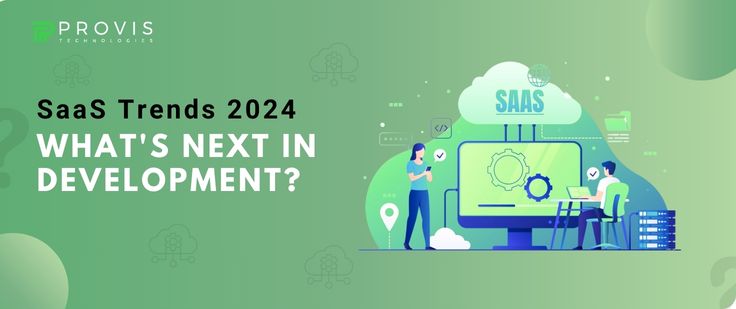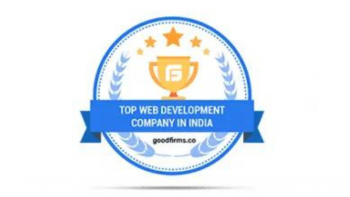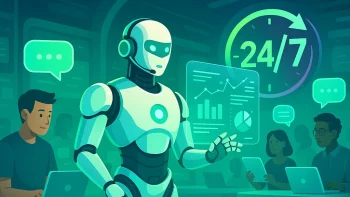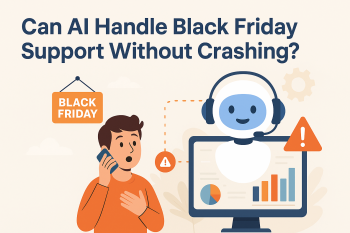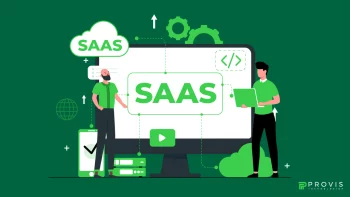SaaS, or Software as a Service, is the talk of the town on the internet. No doubt why organizations & individuals prefer this cloud-based software service-providing method over others. The list of benefits is long & phenomenal. In today’s dynamic internet space, staying ahead of trends is no longer just glamorous but a necessity for success. As we are in 2024, the SaaS domain continues to witness progressive shifts – driven by technological advancements, changing consumer behaviors, and emerging market demands. In this blog post, we will explore the top SaaS trends for 2024 and see what lies ahead.
SaaS Current Market Positions – Stats & Metrics
Understanding market positions will give you an idea about the intensity of SaaS outbursts. Let’s look at some key stats and metrics illuminating the current landscape of SaaS.
Some Estimations of SaaS Growth
- According to Fortune Business Insights, the SaaS market is expected to reach $908.21 billion by 2030 at a compound annual growth rate (CAGR) of 18.7%.
- According to Gartner, SaaS expenditure is expected to escalate by 17.7%, amounting to $232 billion in 2024.
- According to Statista, the SaaS revenue will possibly touch the $344 billion mark by 2027 with an annual growth rate of 7.89%.
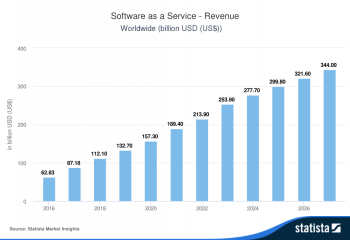
Image Source: Statista
-
As per BetterCloud, 85% of all businesses will be using SaaS-powered applications by 2025, compared to 70% in 2023.
Keeping a pulse on stats & metrics offers valuable insights into the current market positions of SaaS companies. By using data-driven analytics & strategic decision-making – businesses can adapt to evolving market demands, optimize performance, and seize growth opportunities in the dynamic SaaS space. The following points will help you get a better insight:
Market Growth
The SaaS market continues to exhibit robust growth, with projections indicating a compound annual growth rate (CAGR) of over 20% in the coming years. This growth is fueled by factors – such as digital transformation initiatives, increasing cloud adoption, and the need for flexible, subscription-based software solutions.
Revenue Performance
Leading SaaS companies consistently report impressive revenue performance driven by robust customer acquisition & retention strategies. Quarterly & annual revenue growth rates provide key indicators of market competitiveness and customer demand for SaaS offerings.
Customer Acquisition Cost (CAC) vs. Customer Lifetime Value (CLV)
Analyzing the relationship between CAC & CLV provides insights into the efficiency and sustainability of SaaS business models. Lower CAC relative to CLV signifies healthy growth potential and profitability.
Churn Rate
The churn rate, representing the percentage of customers who cancel their subscriptions, is a critical metric for assessing customer satisfaction and product-market fit. SaaS companies aim to minimize churn through proactive customer success initiatives & product improvements.
Net Promoter Score (NPS)
NPS measures customer satisfaction and loyalty by gauging the likelihood of customers recommending a product or service to others. High NPS scores indicate strong brand advocacy and positive customer experiences, driving organic growth and market expansion.
Market Share & Competitive Landscape
Analyzing market share data and monitoring competitors’ activities provide valuable insights into market positioning, emerging trends, and potential areas for differentiation and innovation.
Don’t Miss:- Know About SaaS Development Services A Comprehensive Guide
Why is SaaS everywhere?
SaaS is everywhere because of its benefits and has become a must for these compelling reasons:
- Its subscription-based model offers flexibility & affordability, enabling businesses to access and use software without hefty upfront costs.
- SaaS eliminates the need for complex installations & maintenance, as updates & support are managed by the provider.
- The scalability of SaaS solutions allows businesses to adapt quickly to changing needs & growth opportunities.
- SaaS fosters collaboration & accessibility, empowering users to access applications from any device with an internet connection.
- SaaS’ convenience, cost-effectiveness, and scalability have propelled its ubiquity across industries.
Must Know:- Know How to Choose the Right SaaS Development Company
2024’s Top SaaS Trends
These trends are shaping the landscape of SaaS in exciting ways.
AI & Machine Learning Integration
Artificial Intelligence (AI) & Machine Learning (ML) are no longer buzzwords but integral components reshaping the SaaS landscape. In 2024, we anticipate a surge in SaaS platforms harnessing AI & ML capabilities to enhance user experience, streamline processes, and drive data-driven insights. From personalized recommendations in e-commerce platforms to predictive analytics in project management tools – AI-driven SaaS applications will become universal, revolutionizing how businesses operate.
No-Code/Low-Code Development
The democratization of software development continues to gain momentum with the rise of no-code/low-code platforms. In 2024, these platforms will witness widespread adoption, empowering non-technical users to build and deploy custom SaaS solutions. From small businesses seeking tailored software solutions to enterprises looking to streamline internal processes – no-code/low-code development will unlock new possibilities, accelerating innovation & reducing time-to-market.
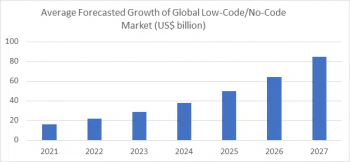
Hybrid Cloud Solutions
While the debate between public & private cloud persists, hybrid cloud solutions emerge as a compromise offering the best of both worlds. In 2024, SaaS providers will increasingly leverage hybrid cloud architectures for greater flexibility, scalability, and security. This approach allows businesses to smoothly integrate on-premises infrastructure with cloud-based services, catering to diverse compliance requirements & workload demands.
Vertical SaaS Expansion
Horizontal SaaS solutions, catering to various industries, have long dominated the market. However, in 2024, we foresee a shift towards vertical SaaS expansion, with niche-specific platforms gaining prominence. From healthcare & finance to manufacturing & real estate – vertical SaaS offerings will emerge to address industry-specific challenges, providing tailored features, compliance adherence, and domain expertise.
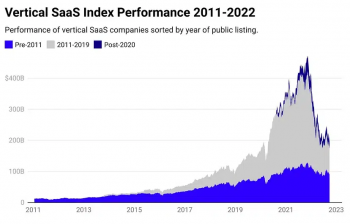
Image Source: State of Vertical SaaS Report
Focus on Data Privacy & Security
With the proliferation of data breaches & privacy concerns, data privacy & security will remain paramount for SaaS development in 2024. SaaS providers will prioritize robust encryption, multi-factor authentication, and compliance with data protection regulations such as GDPR & CCPA. Moreover, advancements in secure multi-party computation & homomorphic encryption will pave the way for privacy-preserving SaaS solutions to ensure user trust & regulatory compliance.
Edge Computing for SaaS
As the demand for real-time processing & low-latency applications rises, edge computing emerges as a game-changer for SaaS development in 2024. By decentralizing computation and data storage closer to end-users, edge computing enables faster response times, reduced bandwidth usage, and enhanced reliability for SaaS applications. From IoT devices to mobile applications, SaaS providers will leverage edge computing to deliver seamless user experiences in diverse environments.
Ecosystem Collaboration & Integration
In an increasingly interconnected digital ecosystem, collaboration & integration among SaaS platforms will be pivotal in 2024. SaaS providers will forge strategic partnerships and embrace interoperability standards to facilitate data exchange and workflow automation across disparate systems. Integration marketplaces and API-first approaches will empower businesses to build custom workflows, driving efficiency & productivity across their software stack.
AR & VR Applications
The convergence of SaaS and immersive technologies will redefine user interactions & experiences in 2024. AR & VR solutions will find widespread adoption across industries – from virtual training simulations in education & healthcare to immersive product demos in retail & e-commerce. SaaS developers will harness the power of AR/VR to create engaging, interactive experiences that transcend traditional boundaries, opening new avenues for innovation.
Related Blog:- Everything You Need to Know about SaaS E-commerce Platforms
Bottom Line
The SaaS promises to be dynamic & transformative this year. As businesses navigate these trends, embracing innovation and agility will be essential to thrive in an increasingly competitive marketplace. Staying alongside emerging technologies and evolving consumer needs – is the key to success for SaaS developers & users. SaaS development companies like Provis Technologies are making a mark exceptionally by adopting & serving the new technology. Their services are turning out to be highly successful for SaaS users & agencies.
FAQs
What role will AI play in SaaS development in 2024?
AI will continue to be a driving force in SaaS development – powering personalized user experiences, predictive analytics, and automation of tasks to enhance efficiency & innovation.
How will no-code/low-code development platforms impact SaaS development?
No-code/low-code platforms will democratize software development, enabling non-technical users to build & deploy custom SaaS solutions, accelerating innovation, and reducing time-to-market.
What advantages do hybrid cloud solutions offer for SaaS development?
Hybrid cloud solutions offer greater flexibility, scalability, and security by smoothly integrating on-premises infrastructure with cloud-based services, catering to diverse compliance requirements & workload demands.
Why is there a shift towards vertical SaaS expansion?
Vertical SaaS expansion addresses industry-specific challenges by providing niche-specific platforms with tailored features, compliance adherence, and domain expertise – catering to specialized requirements across various sectors.
How important is data privacy & security in SaaS development?
Data privacy & security are foremost in SaaS development, with providers prioritizing robust encryption, multi-factor authentication, and compliance with data protection regulations to ensure user trust & regulatory compliance.
What role will edge computing play in shaping SaaS applications?
Edge computing will revolutionize SaaS applications by decentralizing computation and data storage closer to end-users, enabling faster response times, reduced bandwidth usage, and enhanced reliability – especially for real-time processing & low-latency applications.
Written By
Author's Picks
- Know About SaaS Development Services A Comprehensive Guide
- 01/11/2023
- The Future of E-commerce: Embracing SaaS Solutions
- 15/04/2024
- Chatbots for B2B SaaS: Harnessing The Power of AI for Business Growth
- 24/08/2024
Categories
- AI for Startups
- AI in Web Development
- AI Integration
- AI Platforms
- AI Prompt
- AI Tools
- AI Trading Software
- Android App
- Android vs iOS Development
- Angular
- API
- API Development
- App
- app development
- App Idea
- App User Feedback
- Application
- Artificial Intelligence
- Audit Services
- Automotive Industry
- Awards and Recognition
- Business Consulting
- Business Website
- Chatbots
- CRM
- CRM for Financial Advisors
- Custom CRM
- Custom SaaS
- Custom Website
- Customer Service
- dashboard design
- Developing a Mobile App
- Digital Business
- E-commerce
- EMR Integration
- Finance
- Financial Advisors
- Financial Advisors
- GIT
- Health Insurance
- iOS App
- iOS App Development
- IoT Mobile App Development
- IoT Platforms
- IT Audit Services
- IT Consulting
- IT Strategies
- Java Development
- Laravel
- Lean Canvas
- Learning Management System
- Logistics Apps
- Mobile App Development
- MVP
- Native App
- News Aggregator Site
- OTT
- Outsourcing IT
- Payment Gateway
- predictive analysis
- Product Launch Strategy
- Progressive Web App (PWA)
- Prototype
- Recommender Systems
- Ruby
- SaaS
- SaaS Application
- SaaS Business
- SaaS Company
- SaaS Development
- SaaS Product
- SaaS Project
- Sales Funnel
- SEO
- Shopping Cart
- Software Development
- SSL and TLS
- Startup Checklist
- Technology
- Tetradic Color Scheme
- UI/UX Design Company
- Unit Testing
- User Flow
- User Testing
- Web Development
- Web Performance Optimization
- website Maintenance Services
- Website Migration Service
- Website Speed Optimization
- WooCommerce
- WordPress
